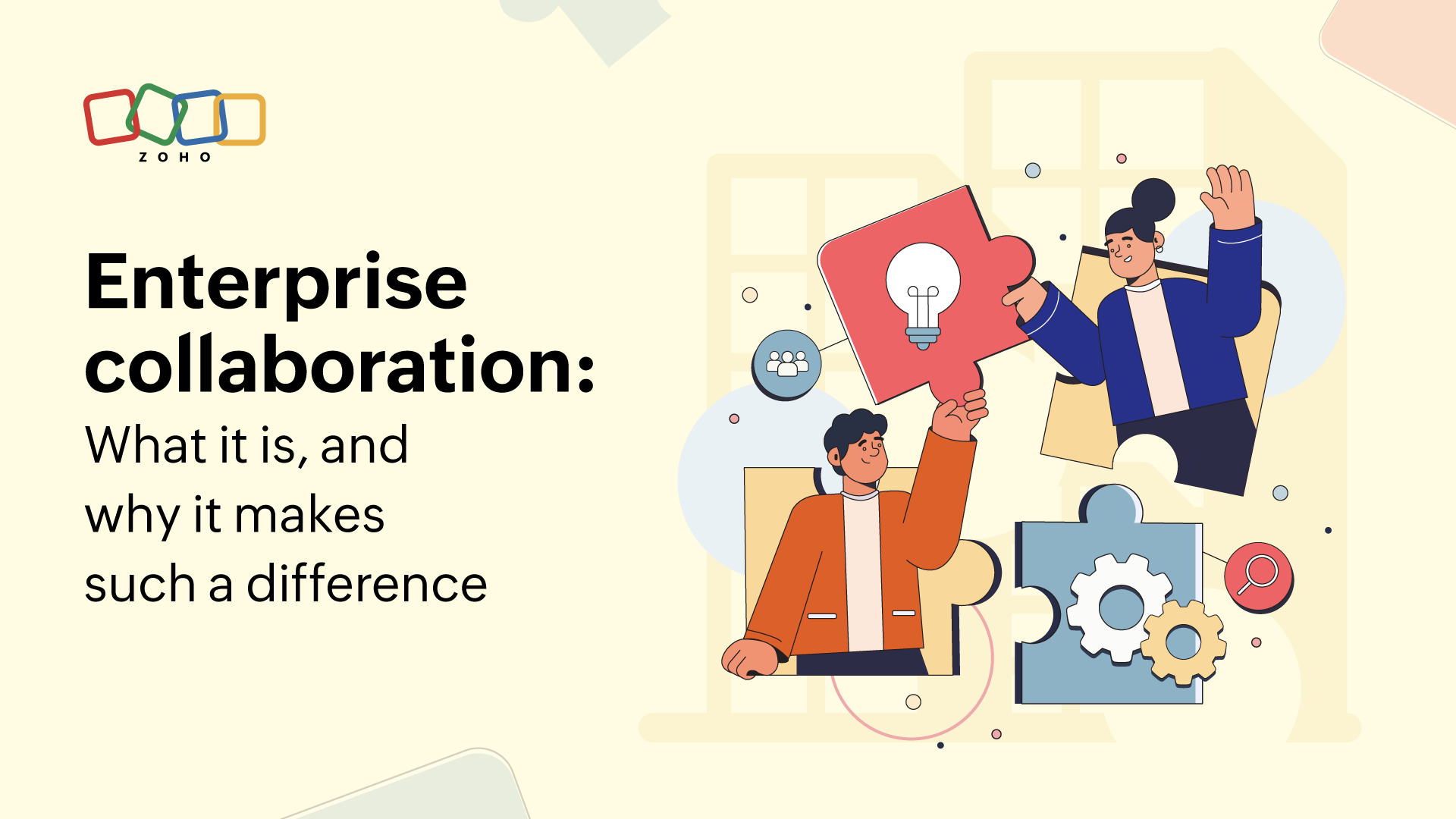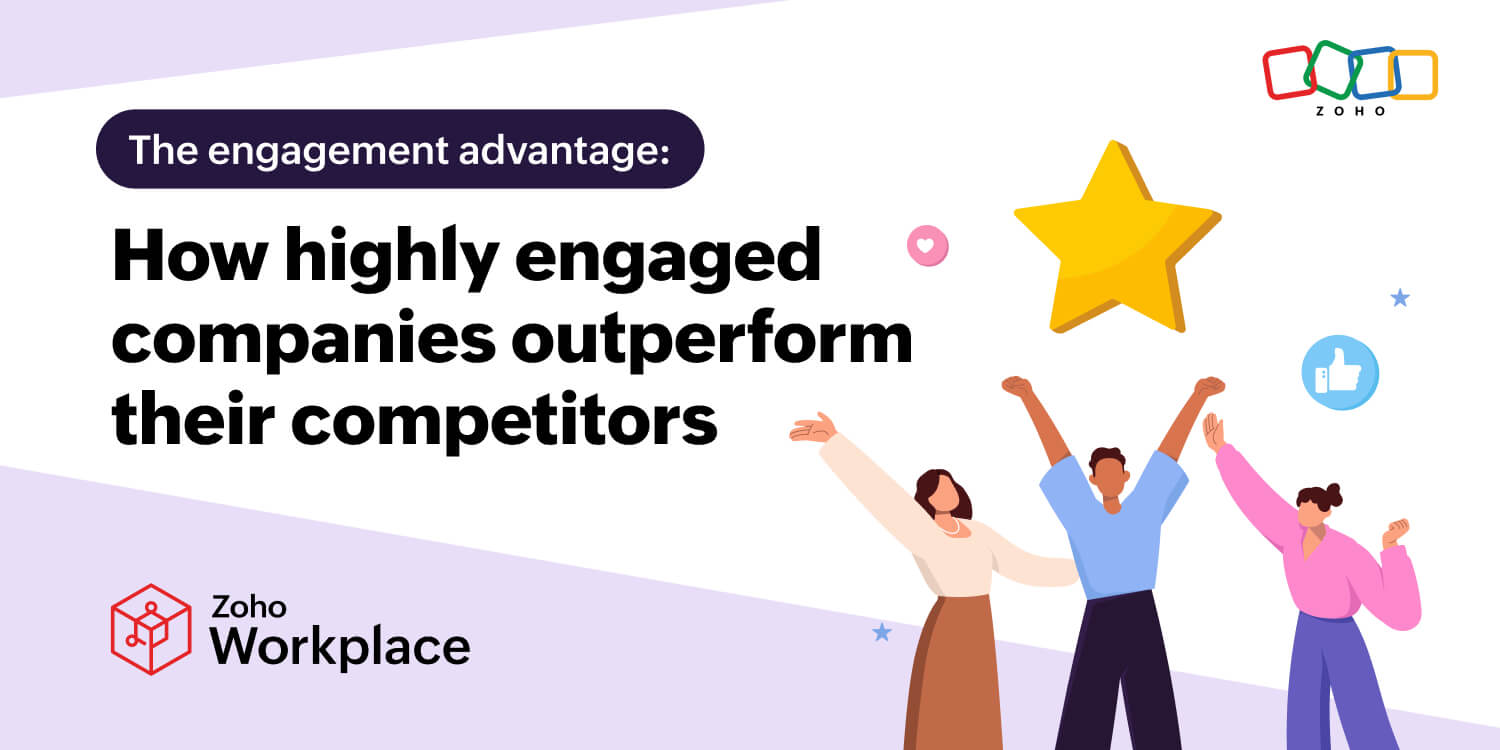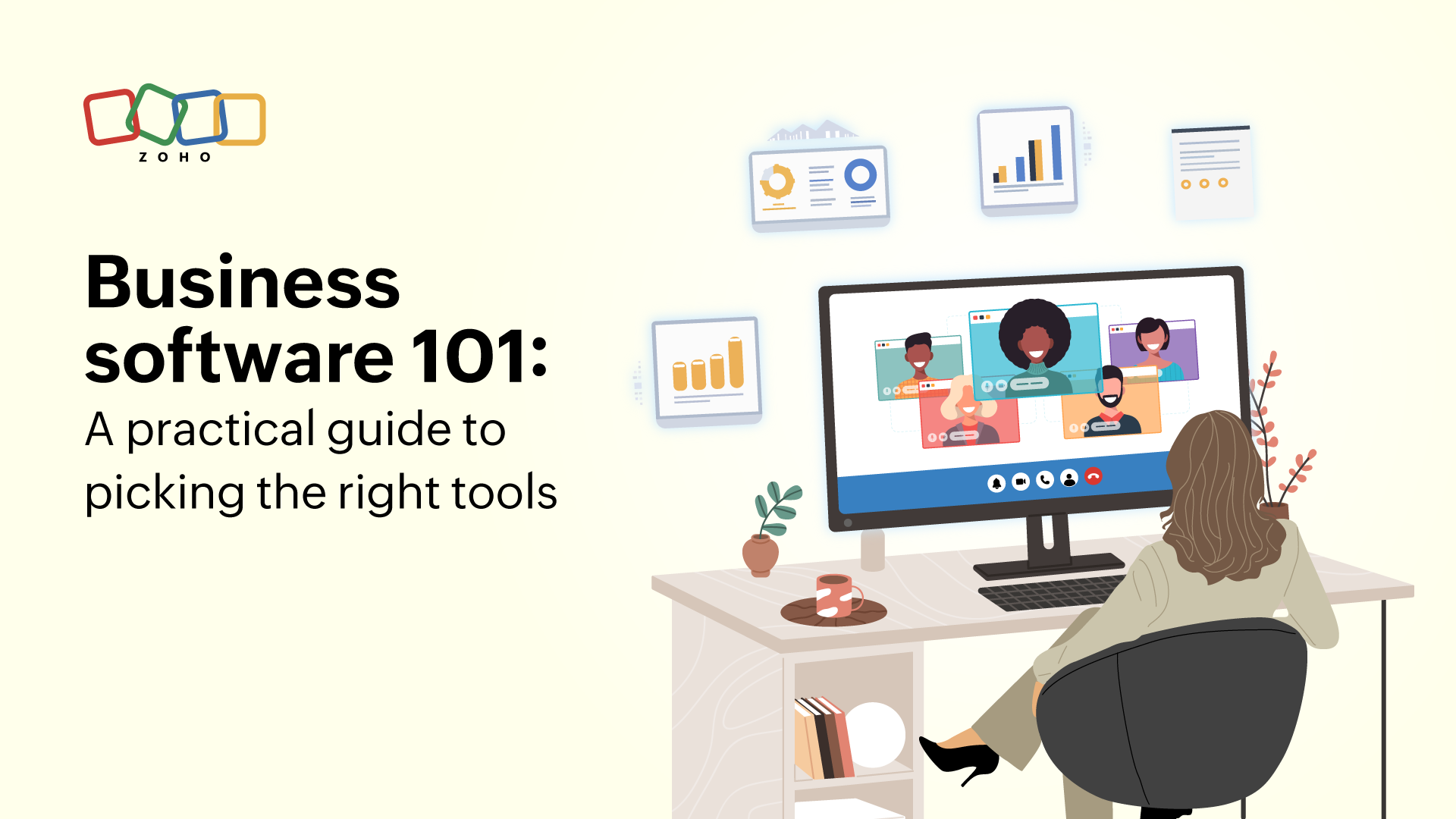- HOME
- All Topics
- Collaboration and Digital Workplace
- Enterprise collaboration: What it is, and why it makes such a difference
Enterprise collaboration: What it is, and why it makes such a difference
- Published : April 14, 2025
- Last Updated : April 30, 2025
- 6 Views
- 6 Min Read
No organization thrives from the work of a single person. You need the work of multiple people. The more barriers there are to block that collaboration between them, the more expensive your projects become, the more deadlines your teams potentially miss, and the less competitive you become in the marketplace.
Here’s how enterprise collaboration keeps this from happening.

What is enterprise collaboration?
Enterprise collaboration is the system that teams use to work together within an enterprise environment. In small to medium businesses, with smaller headcounts and fewer departments, collaborating across the organization can be as simple as sending a few emails or gathering in the conference room. But with enterprise-sized organizations employing hundreds of employees—and often having locations all over the world—collaboration can be more complex.
That’s why enterprise organizations don’t rely solely on emails, whiteboards, and chat messages to collaborate. They deploy an enterprise collaboration system.
What is an enterprise collaboration system?
An enterprise collaboration system is a software tool—or usually a combination of software tools—an organization uses to improve collaboration between employees. Examples of tools used in enterprise collaboration include project management apps, enterprise resource planning software, business intelligence platforms, and customer relationship management tools.
The two types of enterprise collaboration
The two types of enterprise collaboration are differentiated by who is doing the collaborating.
Internal enterprise collaboration
In internal enterprise collaboration, workers in the same organization are collaborating among themselves. This may involve people on the same team, people in multiple departments, or even people in completely different locations of the same organization. Usually, workers collaborating within the same enterprise organization can expect to use similar tools, processes, and workflows.
External enterprise collaboration
In external enterprise collaboration, workers in one organization will work with external collaborators, whether they’re consultants, employees from other organizations, or government entities. With this kind of collaboration, you may have to deal with vast differences in systems, processes, and workflows.
The benefits of using an enterprise collaboration system
An enterprise collaboration system is a dedicated platform for making work between teams smoother. When compared to traditional systems, these platforms come with some significant advantages.
Less email
When email first became widespread, every new email was like a treasured gift. Now, every office worker is inundated with a deluge of spam and sales pitches, with genuine requests for collaboration buried where they’re almost impossible to find. With an enterprise collaboration system, you can centralize all important communication in a platform where it’s easy to find, categorize, and prioritize.
More transparency
If your teams use multiple disparate systems to get their work done, it’s all too easy for an important deliverable or update to get lost in the shuffle. Worse, a manager or department head can completely lose sight of a project, leading them to repeatedly request updates from a team that then has to manually put together a report. If all of that crucial work is kept in an enterprise collaboration system, it’s much easier to navigate. Better yet, many of these systems have deep, built-in reporting capabilities managers can use to track key metrics.
Streamlined teamwork
It’s much easier to collaborate when everyone is using the same system. There’s no question of which platform should be used, no need to adapt to different tools and processes, and no additional learning curve for getting onboarded on a specific project. It takes all of the worst parts of working with modern tools out of the equation, allowing teams to focus on the actual work that needs to get done.
Fewer apps (and less budget strain)
Organizations with at least 501 employees use anywhere between 255 and 664 apps to get their work done. That makes it incredibly challenging to ensure that every team has the information they need to work on important projects. An enterprise collaboration system allows organizations to replace dozens—if not hundreds—of these tools with a single platform. Not only does that help you streamline essential work, it also significantly lightens your budget spend for these tools.
Increased security
The more tools you use, the more gaps there are in your workflows for data to get transferred over. That means potentially dozens of opportunities for malicious actors to access sensitive data or employees to slip up and accidentally share that data with someone who should receive it. Not only does an enterprise collaboration system eliminate these gaps—and many potential security risks—but it typically has robust security features that many other tools don’t.
The challenges of using an enterprise collaboration system
Even though an enterprise collaboration system comes with significant advantages, selecting, deploying, and using these tools come with challenges, which is why they’re typically only accessible to enterprise-sized organizations.
Initial deployment
If your organization is deploying an enterprise collaboration system for the first time, you’re going to run into some issues. First, you have to find the right system for your needs, which means wading through several options, sitting through multiple sales calls, and testing some of your options with pilot projects. Once an option has been selected, it then has to be customized to suit your organization’s needs, deployed by technical experts, and troubleshooted throughout the entire process. It can be a long, arduous road—though the result outweighs the costs.
Learning curves
Enterprise collaboration systems can be challenging to learn, and deploying them involves training entire teams on how they work. Depending on the tool you deploy, you may be able to draw from a wealth of resources to help in this training, but it’s still a significant cost to consider.
Integration needs
While an enterprise collaboration system can centralize most of your data and processes, there will still be situations where it needs to be integrated with other systems. Some organizations may have a dedicated CRM tool loaded with customer data, a project management platform with years of project data, or software development tools that can’t simply be sunsetted. Most of these tools can be integrated with an enterprise collaboration system, but it involves an extra cost or more time for deployment.
External collaboration
Even if your workflows are centralized within an enterprise collaboration system, the work of external collaborators won’t be. That means collaborating with them will involve integrating their platforms with yours or spending extra on a costly license so they can work in your system.
Cost
Dedicated enterprise collaboration systems are some of the most expensive software tools on the market. Whether it’s the highest-tier plan for a project management tool—which is often essential for enterprise needs—or an ERP platform built for a specific purpose, organizations need to allocate significant resources to acquiring, deploying, and maintaining these tools. This makes them prohibitively expensive for some organizations.
Enterprise collaboration best practices
These best practices will allow you to maximize your return on investment with enterprise collaboration systems.
Have clear goals
It’s not enough to say you want to deploy an enterprise collaboration system. You need to know why you’re doing it, and use that as your North Star to guide you in acquiring, deploying, and using the right system. Your goal might be to sunset specific apps in your tool stack, improve the efficiency of some workflows, or assist a key department in its day-to-day work. Whatever that goal is, make it clear, stick to it, and ensure it’s trackable.
Choose the right platform
There are so many options on the market for enterprise collaboration that picking one can feel overwhelming. You can find the option that’s best for you with the right amount of research, help from consultants, and reaching out to people in your network who’ve already gone through this process. Additionally, don’t hesitate to pivot away from a tool that doesn’t suit your needs, even if you’re in the early stages of deploying it.
Invest in continuous training
Just because your employees complete their initial training with your chosen enterprise collaboration system doesn’t mean the work is over. Whether it’s because new features are released, your use of the platform changes, or you just need to bring people up to speed on best practices, expect to regularly train your staff on your chosen system. This will ensure you maximize its benefits.
Regularly track results
An enterprise collaboration system is almost guaranteed to improve productivity throughout your organization, but missteps can happen. You might use it in a less-than-ideal way, find gaps in existing workflows that it doesn’t quite patch, or uncover misuse in some teams. To do that, you need to establish trackable metrics for success and keep an eye on them as your teams learn to use your system.
Collaborate more effectively with the right tools
Enterprise organizations have significant collaboration needs, and they need the right tools to meet these needs. That’s where enterprise collaboration systems come in. These platforms allow enterprise organizations to centralize workflows, data, and entire projects in one place. While establishing this system comes with challenges, like significant investments, a learning curve, and integration needs, the benefits far outweigh these. Find the right tool, deploy it in the right way, and you’ll quickly reap the rewards.
 Genevieve Michaels
Genevieve MichaelsGenevieve Michaels is a freelance writer based in France. She specializes in long-form content and case studies for B2B tech companies. Her work focuses on collaboration, teamwork, and trends happening in the workplace. She has worked with major SaaS brands and her creative writing has been published in Elle Canada, Vice Canada, Canadian Art Magazine, and more.


